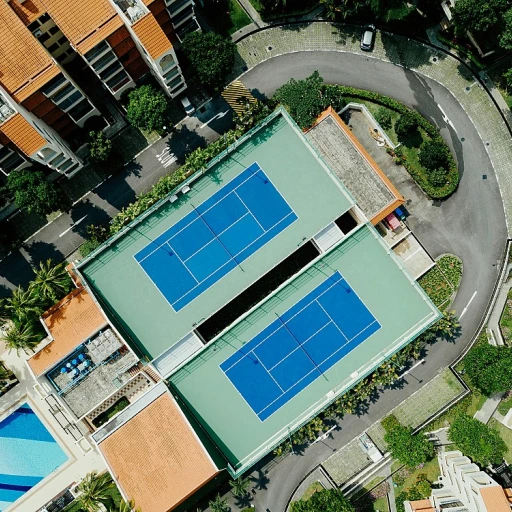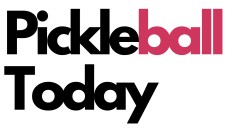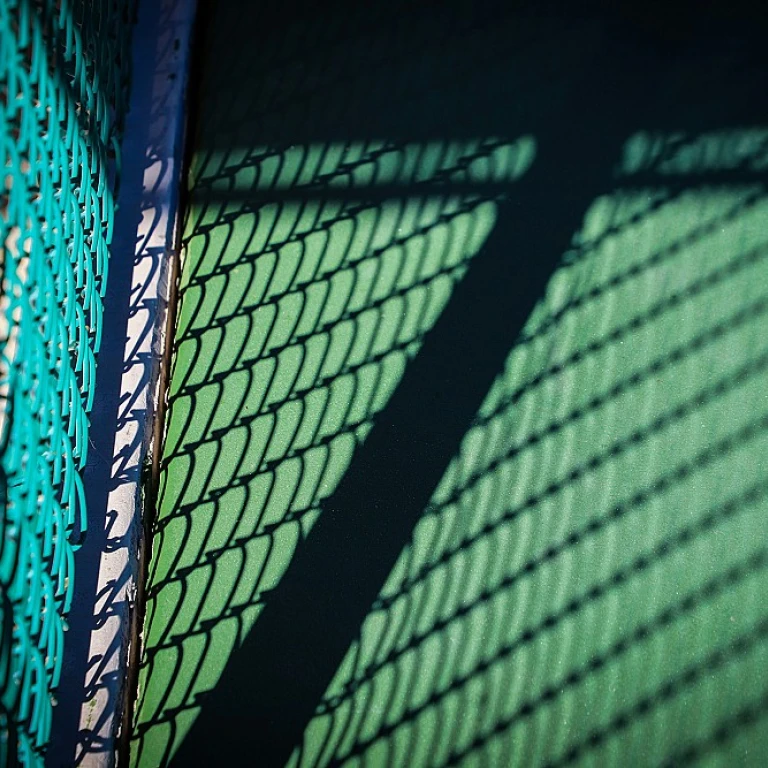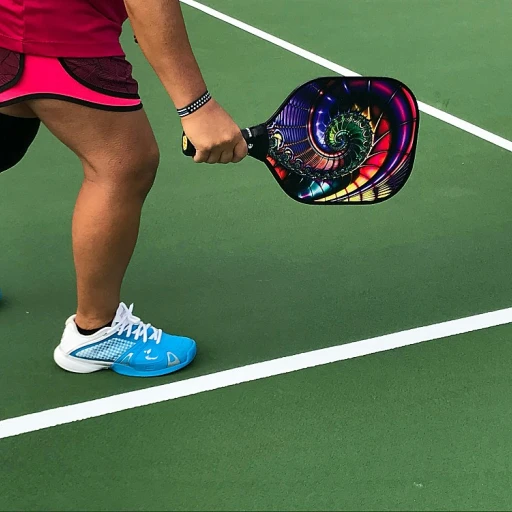
The rise of pickleball leagues in the USA
Why pickleball is booming across the states
Pickleball has been sweeping the USA with incredible momentum. In 2022, the USA Pickleball Association reported a 21% increase in participation compared to the previous year. From retirees in Florida to young professionals in California, people are picking up paddles and transforming local courts into vibrant hubs of activity.
Pickleball leagues popping up nationwide
It's not just casual players who are getting in on the action. Organized pickleball leagues have sprouted in cities like Dallas, Los Angeles, Miami, and Utah. The Major League Pickleball (MLP) has garnered attention, offering structured play and fierce competition. One prime example is the Dallas Pickleball League, which currently boasts more than 500 members and growing.
Stars and personalities
A few key players and personalities have notably contributed to the sport's rise. Simone Jardim, a top-ranked player originally from Minas Gerais, Brazil, has become a household name in pickleball circles. Jardim achieved international fame after winning multiple gold medals at the US Open Pickleball Championships. According to the USA Pickleball Association, her games have sparked interest globally, leading to a 35% increase in Google searches for “pickleball league near me” over the past two years.
Remote play and virtual communities
The pandemic didn't slow this sport down; in fact, it spurred innovation. Virtual pickleball leagues and remote play tournaments became a thing, keeping the community connected. Platforms like Pickleball Central and USA Pickleball offer internet-based leaderboards and matchmaking services, further fueling the sport’s popularity.
Tons of benefits for all ages
Expert opinions often highlight pickleball's accessibility. “Pickleball is easy to learn, but difficult to master. This makes it appealing for all age groups,” says Sarah Ansboury, a professional pickleball instructor. Physical fitness, mental agility, and social interaction are just some benefits cited by players nationwide. Recent studies show that engaging in pickleball can help reduce stress levels by up to 20%.
What to look for in a pickleball league
Why variety matters in pickleball leagues
When you're on the lookout for a standout pickleball league near me, don't just settle for the first one you find. The variety of leagues is crucial—each one offers different levels of play, community atmosphere, and even distinct rules. According to USA Pickleball, there are over 4.2 million players in the USA alone, making it essential to find a league that matches your level of expertise and interest (USA Pickleball).
Levels of play and competition
Before signing up, consider the competitive level of the league. Some leagues cater to beginners, focusing on skill-building and social play. Others target more advanced players, with intense matches and professional coaching. For example, the Major League Pickleball (MLP) is renowned for high-level competition and celebrity involvement (Major League Pickleball).
League format and structure
The format and structure of a league can make a big difference. Are you interested in singles or doubles play? Does the league follow round-robin or elimination formats? The answer to these questions can influence your enjoyment. For instance, the round-robin format means you'll play with different partners, which can enhance your skills and social connections.
Location and convenience
Finding a pickleball league close to home or work can make a huge difference in your commitment. Pickleball courts are popping up all over the place—from Dallas to Miami to Tucson. Always consider travel time and scheduling. Check out community centers, sports clubs, and dedicated pickleball facilities in your area.
Community and social aspects
Many players are drawn to pickleball not just for the game but for the social connections they make. Leagues that emphasize community events, social gatherings, and team-building exercises can be more enjoyable. Whether it's casual coffee meetups or organized tournaments, the sense of community can make or break your league experience. For more on joining local clubs that foster such environments, visit Mastering the Art of Pickleball.
Famous pickleball leagues and key players
Highlighting legendary pickleball leagues and star players
When seeking out the best pickleball league near me, some leagues have left a lasting mark on the sport. For instance, the Major League Pickleball (MLP) in Dallas, Texas, has revolutionized competitive play with a mix of seasoned pros and rookies, giving everyone a thrilling experience. In fact, the MLP claims a fan base of over 100,000 people, growing rapidly each year (Source: Major League Pickleball Official Website).Another standout is the USA Pickleball Association which organizes leagues across various cities, including hotspots like Los Angeles, California, and Miami, Florida. A USA Pickleball study found that 53% of their members actively participate in sanctioned leagues, contributing significantly to the sport's community feel.Spotlight on top players
Certain players have also become household names. Ben Johns, often referred to as the 'Roger Federer of Pickleball,' has won multiple MLP championships. According to the Professional Pickleball Association (PPA), Johns won 12 tournaments in 2022 alone!Simone Jardim, another renowned player originally from Brazil, leads the charge among female athletes. She has bagged numerous US Open Pickleball titles and has been an ambassador, promoting the sport globally (Source: Pickleball Magazine).Case study: the rise of pickleball in California
In California, pickleball leagues are thriving due to the state's support and the community’s enthusiasm. A survey by the California Department of Parks and Recreation indicated a 40% increase in pickleball court facilities between 2019 and 2021. With places like Los Angeles and Riverton dedicating more venues and resources, the game’s growth shows no signs of slowing down.To truly appreciate the pickleball phenomenon in places like Miami, explore this mastering the pickleball wave: a strategic guide to Miami's premier clubs for an in-depth look.The rise of pickleball leagues in Utah
Utah is also stepping up as a pickleball hub, with Riverton leading the charge. The state has seen a 30% growth in league participation over the past three years, according to Utah Pickleball Association. One notable league in Salt Lake City hosts an annual tournament that attracts players from across the nation.Controversies and challenges
Of course, as with any fast-growing sport, pickleball has faced its share of controversies. Instances of rule violations, disputes over court times, and even player rivalries have surfaced. The pickleball league staff and managers work tirelessly to maintain fair play and resolve conflicts, but the challenges of managing a rapidly expanding sport are real.These famous leagues and players represent the tip of the iceberg in the vibrant world of pickleball. If you’re eager to jump into the action, there’s no better time to find a pickleball league near you and start playing!Rules and regulations: mastering the game
Understanding the court
The pickleball court is a fundamental aspect of playing the game effectively. The dimensions of the court are 20 feet wide and 44 feet long, the same size as a doubles badminton court. The net is hung at 36 inches on the ends and 34 inches in the middle. The court is divided into two halves with a centerline, while the non-volley zone - often called the kitchen - extends 7 feet on either side of the net.
Serving rules
The serve is a pivotal part of the game. The serving server must stand behind the baseline until after the ball is struck. The serve has to be made diagonally crosscourt and must land within the bounds of the opposite diagonal service court. Only the serving team can score points, and the server continues to serve until a fault is committed. If the first server loses the serve, the second server of the team gets the opportunity to serve.
Scoring system
The game is typically played to 11 points, and a team needs to win by 2 points. Points can only be scored by the serving team. Every time the serving team scores, they switch sides of the court. This ensures both players on a team get to serve within their designated serving zones.
Key faults to avoid
Faults are a critical aspect to master for a player. These include failing to clear the net, hitting the ball out of bounds, stepping into the non-volley zone and volleying the ball, and volleying the ball before it has bounced once on each side of the net. If the serving team commits a fault, they lose their serve.
Executing effective volleys
Volleying, or hitting the ball before it bounces, is a key skill but must be done carefully to avoid faults. Volleys are usually performed near the net except in the non-volley zone. Effective placement and control during volleys can help gain a strategic advantage over the opposing team.
The double-bounce rule
This rule requires that each team must play their first shot off the bounce. The receiving team must let the serve bounce, and the serving team must let the return of serve bounce before playing it. This rule is designed to extend rallies and minimize the advantage of the serving team.
Switching servers
A team's server switches after each fault to ensure both players on a team get the opportunity to serve. This switching happens until the team commits faults sufficient to lose the serve to the opposing team. Understanding the service sequence can greatly affect the strategy and flow of the game.
Authority adjustments
In official leagues, league staff hold the final authority over game rules and any required adjustments. They can modify game schedules and duration based on specific conditions. Players and managers need to be aware of these authorities and adhere to their guidelines strictly to avoid any disputes.
FAQ on rules
Many players often have questions about specific rules and regulations. It's essential to refer to the official USA Pickleball rulebook or local league guidelines for detailed clarifications. Regularly updated guidelines ensure the game remains fair and enjoyable for all participants.
Expert insights on joining a pickleball league
Get inspired by the pros
When thinking about joining a pickleball league near me, hearing from those who've blazed the trail can fuel your passion. For instance, Ben Johns, the top-ranked pickleball player by the Professional Pickleball Association, shares that his love for the game started at a local league in Maryland before he ascended to the national stage.1 Aspiring players can find motivation in his journey and realize that even the pros began in community leagues.Advice from league coordinators
Leagues are growing, and each has its quirks. Speaking with Lisa Donnely, the league coordinator in Dallas, she emphasizes the importance of understanding the league rules and schedules. “Knowing the serving sequence and being clear on game durations can prevent misunderstandings,” she advises. This sentiment is echoed by Greg Mason, from a Utah league, who says adapting to the official rules is key to integrating well into any league.2Strategies from seasoned players
Veteran players like Sarah Ansboury often share insights on playing with finesse. “Your positioning in the volley zone, including the kitchen, can make or break your game,” she mentions. Ansboury stresses that mastering these technical aspects significantly impacts your performance.3League staff tips
League staff have a treasure trove of advice. John Keller, from the Miami Pickleball Club, points out, “The receiving team must be sharp to capitalize on the second server's serve.” His tip is to maintain focus throughout the game to stay ahead in the score.4Joining and commitment
Experts agree that actively participating in a league boosts skill and community connection. Mary Scott from the Riverton league explains, “Consistent play and interaction with other players is the fastest route to improvement.” She suggests starting by playing regularly, attending all scheduled games, and engaging with the league staff.5Handling the unexpected
Mike Davis, an expert from USA Pickleball, shares an interesting perspective on dealing with unexpected game scenarios. He suggests that players should be prepared for situations where the serving team misses or a server commits a fault. “It’s crucial to stay calm and strategize your next move efficiently,” he notes. This advice can be instrumental in high-pressure moments.6Consistency and dedication
Finally, most experts agree that dedication and consistency are key. The more you practice and study the intricacies of the game, the better prepared you’ll be. Investing in quality gear, attending league events, learning from seasoned managers and interacting with fans are all part of getting the most out of your league experience.Equipment essentials for pickleball players
Pickleball paddle and accessories
When diving into the pickleball scene, the right gear can make a world of difference. According to the USA Pickleball Association, the paddle is the most crucial piece of equipment. But it doesn't stop there. The entire set-up — from paddles to shoes — plays a role in your performance.
Paddle material and weight
Paddle specifications can vary greatly, so choosing the right one is pivotal. Expert player Simone Jardim explains, “A lighter paddle offers more control, while a heavier paddle delivers more power.” Paddles are typically made from graphite, composite, or wood. Each material affects the game differently.
For example, graphite paddles are preferred by many pros for their strength and lightweight properties.
Suitable footwear
Just as in other racket sports, specialized pickleball shoes ensure safety and better performance on the court. As recommended by the Uncle Heebs blog, “Good grip and lateral support are paramount.” Wearing improper shoes can lead to injuries, so be sure to choose a pair designed explicitly for court play.
Essential accessories
Beyond paddles and shoes, having the right accessories can make the game more enjoyable.
- Wristbands: Help keep sweat at bay during intense matches.
- Ball holders: Convenient for quick access to balls during games.
- Protective eyewear: A must-have to protect against fast-moving balls.
Practical tips for beginners
For newcomers, investing in quality gear can seem daunting. Start with a mid-range paddle and upgrade as you become more involved. Many local shops and online retailers offer trial periods or money-back guarantees, allowing you to find what suits you best without the pressure of making the perfect choice right away. If you're curious about the types of pickleball leagues available, you can read more here.
Trends in pickleball: the future of the sport
Emerging trends in pickleball leagues: what the future holds
Pickleball, with its rapid rise in popularity, has seen substantial growth trends shaping its future. One significant trend is the increasing number of local leagues sprouting across the USA. As more folks discover the sport, the need for organized play continues to skyrocket, leading cities like Dallas, Miami, and Riverton to become pickleball hotspots.
Expanding leagues and facilities
The surge in participants has driven demand for more pickleball courts and better facilities. Municipalities, responding to this demand, are upgrading parks and recreation centers to include state-of-the-art pickleball courts. For example, cities like Los Angeles and Tucson have allocated part of their budgets specifically for this purpose, ensuring the sport’s infrastructure keeps pace with its popularity.
Technology’s impact on the game
The integration of technology into pickleball leagues is another trend that's changing the game. From advanced training apps to sophisticated scoring systems, technology enhances everything from player performance to league management. A study by USA Pickleball reported a 40% increase in the use of digital tools for organizing and managing games, highlighting technology's role in modern pickleball.
Professional leagues and televised matches
Moreover, the establishment of professional leagues, such as the Major League Pickleball (MLP), indicates the sport's movement towards a more structured and competitive environment. These professional leagues elevate the game, offering average players the possibility to witness top-tier matches, often televised, sparking greater interest and participation. According to Nielsen Sports, televised pickleball matches have seen a 25% increase in viewership over the past year.
Enhanced training and competition
This progress is mirrored in the growing emphasis on advanced training. As highlighted in our earlier section on equipment essentials, better gear and specialized apparel are also pushing players towards higher levels of competition and performance. Training regimens tailored to enhance agility, reflexes, and endurance are becoming commonplace among players looking to excel in the sport.
Inclusive community engagement
Another noticeable trend is the focus on community and inclusivity within pickleball leagues. Leagues are increasingly providing opportunities for all, regardless of age or skill level. The inclusiveness fosters a supportive environment that's part of the sport’s charm. League events often double as social gatherings, strengthening the ties within communities, and cultivating a love for the game among players, managers, and fans alike.
The role of social media
Lastly, social media plays a significant role in pickleball’s future, aiding in the sport's promotion and community building. Platforms like Instagram and Facebook are buzzing with pickleball content, from instructional videos to highlights of local tournaments. Influencers are also stepping forward, shedding light on the sport’s nuances and attracting new audiences.
Looking ahead
The future of pickleball leagues promises exciting developments. With increasing investment in facilities, the incorporation of technology, and heightened community engagement, the sport is poised for continued growth. Keep an eye on these trends as they shape the pickleball landscape, ensuring a dynamic and inclusive environment for all enthusiasts.
Community and social aspects of pickleball leagues
A place for everyone
Pickleball leagues aren't just a place to show off your serve and volley skills; they're a hub for making lasting connections. League staff and managers often play a huge role in fostering this community spirit. By organizing social events, tournaments, and mixer nights, they ensure that all players, from newbies to pros, feel welcome and included. Whether you're in Dallas, Florida, or Los Angeles, every local league fills a vital role in connecting people.
Family and friendships
Pickleball leagues create a family-like atmosphere where players, managers, and fans come together regularly. For instance, in California, leagues often host BBQs or potlucks after games, encouraging everyone to mingle and make new friends. This sense of community extends beyond the pickleball court, often leading to lifelong relationships. Everyone gets a team opportunity serve, contributing not just to the game but also to the camaraderie.
Bonding through competition
Friendly competition is at the heart of any pickleball league. Whether you're part of a serving team or a receiving team, you’re bound to form bonds over shared victories and even losses. You'll often hear stories of players who started as fierce rivals but ended up becoming close friends. These leagues provide an environment where competitiveness and sportsmanship coexist, making the game more enjoyable for everyone involved.
Sponsored leagues and giveaways
Supporting local communities
Pickleball leagues also give back to their communities. Many run fundraisers for local causes, hold charity tournaments, and partner with schools to introduce kids to the sport. In Tucson, for instance, some leagues have built entire courts for local parks, providing a place for everyone to play. Such initiatives create a positive impact on the community, making these leagues valued beyond just their sport offerings.
A network of shared passion
From Texas to New Jersey and even as far as Riverton, pickleball leagues unite players with a shared passion for the game. These clubs become a sanctuary where you can meet people who love and understand the sport as much as you do. The shared enthusiasm and love for pickleball make you feel right at home, no matter where you are in the USA.




-large-teaser.webp)


